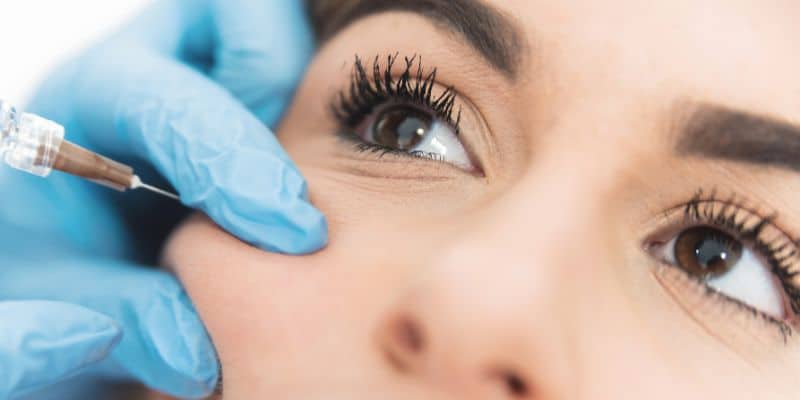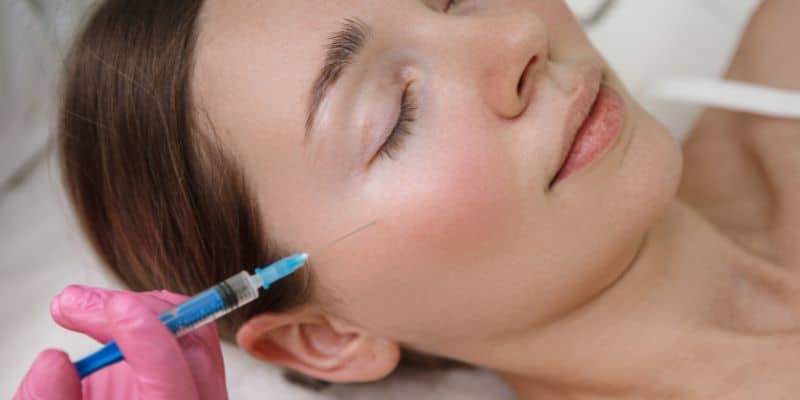
Dermal fillers continue to gain ground as a popular, minimally invasive option for facial rejuvenation. In particular, the cheek area, with its key role in defining facial structure, has become a focal point for these aesthetic enhancements. Given the rapid pace of innovations in the field, staying abreast of the latest techniques, filler types, and treatment protocols is essential for any practitioner dedicated to delivering optimal results for patients.
This article offers an exploration of dermal filler use specifically for the cheek area. It encompasses an understanding of facial anatomy, discussions on different types of fillers, indications for their use, injection techniques, and managing potential complications. The intent is to equip medical professionals with information and insights that will bolster their practice, augment patient satisfaction, and ultimately, contribute to the field of aesthetic medicine.
Anatomy of the Cheek Area
The anatomy of the cheek region is complex and multifaceted, requiring a deep understanding to ensure effective and safe dermal filler application. A nuanced comprehension of the various structures, layers, and the interplay between them forms the foundation of successful aesthetic enhancement.
The cheek region is divided into several key areas – the malar and submalar areas, the zygomatic arch, and the buccal region. The malar area pertains to the prominence of the cheekbone, while the submalar area lies immediately below it, contributing to the fullness of the lower cheeks. The zygomatic arch refers to the bony ridge that forms the highest point of the cheekbone, extending towards the ear. The buccal region lies further anterior, characterised by its soft, fleshy consistency.
Each area presents unique properties that dictate the appropriate filler type and injection technique. The malar and zygomatic areas, due to their proximity to bony structures, typically require denser fillers and deeper injection planes. In contrast, the softer, more mobile buccal and submalar areas may benefit from lighter fillers and more superficial injections.
The layered structure of the cheek area, from the skin to the periosteum covering the bony surface, consists of several structures including the epidermis, dermis, subcutaneous fat, superficial musculoaponeurotic system (SMAS), and deep fat compartments. Understanding the distribution and function of these fat compartments is crucial as age-related changes in these areas often lead to the characteristic sagging and volume loss. The superficial and deep fat compartments not only contribute to the volume and contour of the cheek but also impact the overlying skin’s appearance.
Blood supply to the cheek region, primarily from branches of the facial artery, is another critical aspect. Knowledge of vascular landmarks helps avoid inadvertent vascular compromise or intravascular injection, reducing potential complications. The same goes for understanding the location and course of facial nerves in the cheek area.
Lastly, every individual has unique facial characteristics influenced by age, ethnicity, and genetics. Recognising these differences and how they impact the anatomy of the cheek area is vital for personalised treatment strategies.
Types of Dermal Fillers for Cheek Augmentation
Dermal fillers have revolutionized the aesthetic medical field, offering physicians and their patients a non-surgical solution to restore facial volume, especially in the cheek area. Understanding the different types of dermal fillers can aid in tailoring the ideal treatment plan for each patient, ensuring optimal results.
1. Hyaluronic Acid (HA) Fillers
Hyaluronic acid is a naturally occurring substance in the body, which attracts and holds water, helping to hydrate the skin and add volume. HA fillers, such as Juvederm, Restylane, and Teosyal, are commonly used for cheek augmentation due to their high safety profile, natural feel, and immediate visible results. They offer flexibility in volume restoration and enhancement of cheek contours. Notably, the effects of HA fillers can be reversed with an enzyme known as hyaluronidase, making them a safer choice for patients and doctors alike.
2. Calcium Hydroxylapatite (CaHA) Fillers
Calcium hydroxylapatite, found in products like Radiesse, is a mineral-like compound naturally present in human bones. It is suspended in a gel carrier, which, when injected, provides immediate volume. Over time, the gel is absorbed, and the CaHA particles aid in collagen stimulation, providing longer-lasting results. CaHA fillers are often used for deeper injections, making them suitable for patients requiring significant volume restoration in the cheek area.
3. Poly-L-lactic Acid (PLLA) Fillers
Poly-L-lactic acid, found in Sculptra, is a biocompatible, biodegradable synthetic substance. It’s a collagen stimulator rather than a traditional filler; it works by helping the body generate its own collagen over time, creating more long-lasting, natural results. However, the effects of PLLA fillers are not immediate, with visible results typically appearing after several weeks and multiple treatment sessions.
Indications for Cheek Augmentation with Dermal Fillers
Cheek augmentation with dermal fillers has emerged as a commonly practiced aesthetic procedure due to its impressive capability to restore youthful volume and enhance facial contours. Multiple indications, ranging from age-related volume loss to aesthetic reshaping of the cheekbones, position dermal fillers as a powerful tool in the hands of cosmetic practitioners.
One primary indication for cheek augmentation with dermal fillers is age-related volume loss. With aging, there’s a decrease in the natural fat pads and collagen in the cheeks, leading to sagging, wrinkles, and a flattened appearance. Dermal fillers can serve as a practical solution, restoring lost volume and providing a more youthful appearance.
Secondly, dermal fillers are often used to enhance facial contours, particularly for patients who desire more defined or prominent cheekbones. By administering fillers in the right areas, practitioners can create sharper, more pronounced facial angles and contour, adding to the aesthetic appeal.
Another key indication is the correction of facial asymmetry. Although it’s normal to have some degree of asymmetry, it might be more pronounced in some individuals and could be a cause of concern. In such scenarios, dermal fillers can be skillfully used to restore symmetry, yielding substantial improvements in facial balance and harmony.
Further, dermal fillers can be used for the treatment of certain types of scarring, including acne scars, by filling in the scarred area and improving the overall skin texture. It’s noteworthy that the success of this application largely depends on the type and severity of the scarring, and it’s important to manage patient expectations in this regard.
Next, dermal fillers can play a valuable role in the revision of previous cosmetic surgeries, helping to refine the results or correct any unwanted outcomes. For example, if a patient is unsatisfied with the results of a previous cheek implant surgery, dermal fillers can be a less invasive means to adjust the final appearance.
Lastly, dermal fillers have found an indication in patients with congenital or acquired facial deformities, such as those resulting from trauma, surgery, or conditions like hemifacial microsomia. While it might not be the first-line treatment in severe cases, dermal fillers can still make a significant difference in the facial aesthetics of these patients, often improving their self-esteem and quality of life.
As always, it’s crucial for practitioners to conduct a thorough patient assessment and consultation before deciding on the treatment plan. Careful attention should be paid to the patient’s aesthetic goals, overall health status, history of previous treatments, and potential risk factors. It’s equally essential to educate the patient about the procedure, potential risks, expected results, and alternatives, ensuring that they can make an informed decision.
Techniques for Cheek Augmentation with Dermal Fillers
Dermal fillers offer a highly effective, non-surgical method of enhancing the cheek area, and their successful application largely relies on the technique employed by the practitioner. Three of the most commonly utilized techniques include linear threading, fanning, and cross-hatching.
Linear Threading Technique
This involves injecting the dermal filler along a wrinkle line or fold in a continuous thread. The needle is inserted at one end of the treatment area and is slowly withdrawn as the product is injected. This technique is particularly effective for treatment of deep nasolabial folds and other pronounced facial lines, but it also has utility in adding volume to the cheek area. The linear threading technique allows for even distribution of the filler, helping to create a smooth, natural appearance. However, precise needle placement is crucial to avoid complications such as inadvertent injection into a blood vessel.
Fanning Technique
The fanning technique involves inserting the needle at a central point and then ‘fanning out’ multiple threads of filler in different directions. This technique allows for a broader area of augmentation with fewer injection points, reducing discomfort and potential tissue trauma. This is particularly useful when treating larger areas such as the cheeks, as it provides an opportunity to add volume and contour in a single treatment session. However, the fanning technique requires a high degree of skill and experience to ensure symmetrical and natural-looking results.
Cross-Hatching Technique
In the cross-hatching technique, parallel lines of filler are first injected, followed by a series of perpendicular lines, forming a grid or ‘cross-hatch’ pattern. This technique is frequently employed in areas where broad, even volume distribution is desired, making it well-suited to cheek augmentation. The resulting lattice of filler can provide a substantial lift and volumization to the cheeks. The main challenge with this technique lies in achieving an even, symmetrical distribution of the product.
All of these techniques have their own advantages and potential challenges. The selection of technique largely depends on the individual patient’s facial anatomy, the specific area being treated, and the desired outcome. For instance, while the fanning technique might be suitable for generalized cheek volumization, the linear threading might be more appropriate for augmenting specific facial features or contours.
Moreover, the correct injection depth is essential regardless of the technique chosen. Superficial injections can lead to irregularities, visible lumps, and Tyndall effect (a bluish discoloration of the skin), whereas too deep injections may yield less noticeable results.
It’s important for medical practitioners to receive comprehensive training and continuous practice to master these techniques. Attending workshops, live demonstrations, and advanced courses can aid in honing these skills. Furthermore, it is critical to understand the facial anatomy, the properties of the chosen filler, and the patient’s aesthetic desires to achieve optimal results.
Patient Assessment and Consultation
The initial patient assessment and consultation represent an invaluable opportunity for setting expectations, establishing rapport, and developing an individualized treatment plan that aligns with the patient’s aesthetic goals. Clear communication is the cornerstone of this process.
To begin, a comprehensive medical history must be gathered, including previous cosmetic procedures, allergies, current medications, and any pertinent systemic diseases. This not only aids in ruling out contraindications but also assists in gauging how the patient might respond to the treatment. Understanding the patient’s history can guide the selection of the most suitable dermal filler and injection technique.
Equally important is an open conversation about the patient’s aesthetic goals. This conversation should involve a comprehensive facial analysis. Not all patients may desire the same outcome; some may be looking for subtle enhancement while others might seek a more noticeable change. As such, an in-depth understanding of the patient’s desires can guide the treatment plan and contribute to achieving satisfactory results.
A visual examination of the cheek area should be carried out, keeping in mind the individual’s age, ethnicity, gender, and overall facial symmetry. Skin quality and tone, the distribution of facial fat, and the presence of asymmetries or pre-existing tissue irregularities should also be noted. Such an examination allows for an optimal balance between patient aspirations and what is realistically achievable. It also aids in predicting potential complications.
In addition to establishing the patient’s medical and aesthetic baseline, the consultation is the ideal time to discuss potential risks and complications. Patients should be informed about possible side effects such as bruising, swelling, infection, or more serious complications like vascular occlusion. Transparency during this phase can help build trust and also ensure that patients are making informed decisions about their treatment.
Further, it is essential to outline the expected post-procedure course and discuss the need for follow-up appointments. Patients should understand that dermal filler treatment is not a one-off procedure, but rather a part of an ongoing facial management plan that may need adjustments over time.
As doctors, it is crucial to maintain an empathetic, respectful, and professional approach throughout the consultation. While it is important to respect the patient’s autonomy in decision-making, doctors have the responsibility to provide expert advice, especially when patient’s expectations are unrealistic or if the desired treatment could potentially result in an unnatural or disproportionate outcome.
Lastly, given that dermal filler treatments represent a substantial financial investment for many patients, a clear discussion about the costs involved is warranted. This includes not only the immediate cost of the procedure but also any potential expenses related to follow-up treatments or management of complications.
Possible Complications and Their Management
When administering dermal fillers in the cheek area, understanding potential complications and their appropriate management is crucial. Although generally considered safe, these procedures are not without risks, underscoring the necessity for vigilance and meticulous technique.
One of the most common complications is bruising or bleeding at the injection site. This risk can be mitigated by careful patient selection and by avoiding injection into blood vessels. Informing patients about the risk of bruising, and advising them to avoid medications that can increase this risk, such as aspirin and other anticoagulants, is an integral part of the pre-treatment consultation.
Infections, although rare, can occur and should be addressed promptly with appropriate antibiotic therapy. Sterile technique during filler administration is paramount in reducing this risk.
Another significant complication is vascular occlusion, which can lead to skin necrosis or even blindness. Early recognition of the signs of vascular occlusion, such as blanching, severe pain, or changes in vision, can allow for immediate intervention. Hyaluronidase, a hyaluronic acid-dissolving enzyme, can be used to dissolve hyaluronic acid fillers in the event of vascular occlusion.
Granuloma formation, although rare, can also occur following dermal filler administration. Granulomas are nodules that may form even months after the treatment. In most cases, they can be treated with intralesional corticosteroids or surgical excision, if necessary.
Patient education about the potential risks and signs of complications, as well as prompt intervention when complications occur, are key in ensuring patient safety and satisfaction. By integrating these practices into routine care, a practitioner can effectively mitigate risks and respond appropriately to any complications that arise.
Remember, no procedure is entirely devoid of risks. However, the careful management of potential complications is an important step in ensuring positive outcomes and maintaining patient trust.

Post-Treatment Care and Follow-up
Following a successful procedure, proper post-treatment care is a vital component of ensuring optimal outcomes for the patient and enhancing overall satisfaction.
After the dermal filler application, the immediate area of treatment may exhibit common reactions such as swelling, redness, bruising, or tenderness. Informing patients about these potential symptoms and their temporary nature can alleviate unnecessary concern. Instruct patients to apply a cold pack intermittently on the treatment area for the first 24 hours, if needed, to mitigate swelling. However, it’s crucial to stress that they should avoid pressing or massaging the treated area to prevent filler migration.
Patients are usually advised to minimize strenuous exercise, extensive sun or heat exposure, and consumption of alcoholic beverages for at least 24 hours post-treatment. Each of these can exacerbate swelling, redness, or increase the potential for minor bruising.
Recommendations for skincare routines post-treatment should also be discussed. Patients can generally continue their regular skin care regimen, but should avoid using products that could irritate the treated area for the first few days.
Further, hygiene is another critical factor to ensure the prevention of potential infection. Advise patients to avoid touching the treatment area and to keep it clean.
As part of the follow-up care, scheduling the first follow-up appointment within two weeks of the treatment is a good practice. During this visit, the results of the treatment can be assessed, any adverse reactions can be promptly addressed, and any need for touch-up treatments can be identified.
The importance of the follow-up cannot be overstated. These appointments enable the early detection of any long-term complications, such as lumps, overcorrection, or asymmetry, that may necessitate further treatment. Additionally, the follow-up visit allows an opportunity for feedback and for discussing future treatment plans if necessary.
Conclusion
The diverse array of dermal fillers available today offers doctors significant flexibility in treatment planning. Understanding the unique characteristics of each filler, coupled with a comprehensive knowledge of cheek anatomy, allows for optimal patient outcomes.
The presented injection techniques form a strong foundation for practical application, and offer ways to minimize risk and enhance patient comfort. Furthermore, a careful patient consultation, diligent management of complications, and consistent follow-up can greatly enhance patient satisfaction and safety.

